Posts Tagged ‘system’
13th December
2016

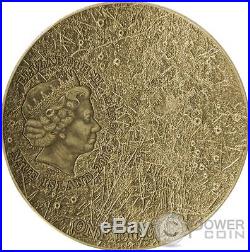



31.1 (1 oz). This beautiful 1 Oz Silver coin, with a real meteorite and yellow Antique Finsh quality, is the second issue of the series “Solar System”. The coin depicts the Mercury surface on both sides, with a concave shape and the insert is a real piece of the NWA 8409 Meteorite. The coin is housed in a prestigious wooden box with Certificate of Authenticity. Extremely low mintage of 686 pieces worldwide! The reverse of the coin depicts the Mercury surface, with very realistic details. What makes this coin unique is a real meteorite called NWA 8409, fallen on Earth in Northwest Africa, inlaid on the coin. On top of the coin the inscription “Solar System Mercury” and on the obverse side the effigy of Her Majesty Queen Elizabeth II. Mercury Mercury is the smallest planet in the Solar System and the one closest to the Sun, with an orbital period of about 88 Earth days, which is much faster than any other planet in the Solar System. Seen from Earth, it appears to move around its orbit in about 116 days. It has no known natural satellites. It is named after the Roman deity Mercury, the messenger to the gods. Partly because it has almost no atmosphere to retain heat, Mercury’s surface temperature varies diurnally more than any other planet in the Solar System, ranging from 100 K (-173 °C; -280 °F) at night to 700 K (427 °C; 800 °F) during the day in some equatorial regions. The poles are constantly below 180 K (-93 °C; -136 °F). Mercury’s axis has the smallest tilt of any of the Solar System’s planets (about 1/30 of a degree). However it has the largest orbital eccentricity: at aphelion, Mercury is about 1.5 times as far from the Sun as it is at perihelion. Mercury’s surface is heavily cratered and similar in appearance to the Moon, indicating that it has been geologically inactive for billions of years. Mercury is gravitationally locked and rotates in a way that is unique in the Solar System. As seen relative to the fixed stars, it rotates on its axis exactly three times for every two revolutions it makes around the Sun. As seen from the Sun, in a frame of reference that rotates with the orbital motion, it appears to rotate only once every two Mercurian years. An observer on Mercury would therefore see only one day every two years. The item “SOLAR SYSTEM MERCURY NWA 8409 Meteorite Silver Coin 1$ Niue 2016″ is in sale since Tuesday, December 06, 2016. This item is in the category “Coins & Paper Money\Coins\ World\Australia & Oceania\South Pacific”. The seller is “powercoin_italy” and is located in Roma. This item can be shipped worldwide.
- Circulated/Uncirculated: Uncirculated
- Year: 2016
- Composition: Silver
- Country/Region of Manufacture: Niue
Comments Off
24th September
2016

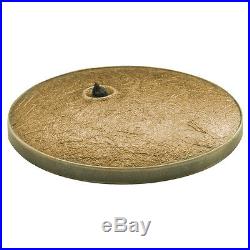



Coin comes in the capsule with COA and original Box. Please see our other auctions. Return item must be sent within 14 days after it has been received. The item “Niue 2016 1$ Mercury Solar System Antique finish Meteorite NWA 8409 Silvler Coin” is in sale since Monday, September 19, 2016. This item is in the category “Coins & Paper Money\Coins\ World\Australia & Oceania\Other Oceania Coins”. The seller is “coins-cis” and is located in Poland. This item can be shipped worldwide.
- Composition: Silver
Comments Off
23rd September
2016





31.1 (1 oz). This beautiful 1 Oz Silver coin, with a real meteorite and yellow Antique Finsh quality, is the second issue of the series “Solar System”. The coin depicts the Mercury surface on both sides, with a concave shape and the insert is a real piece of the NWA 8409 Meteorite. The coin is housed in a prestigious wooden box with Certificate of Authenticity. Extremely low mintage of 686 pieces worldwide! The reverse of the coin depicts the Mercury surface, with very realistic details. What makes this coin unique is a real meteorite called NWA 8409, fallen on Earth in Northwest Africa, inlaid on the coin. On top of the coin the inscription “Solar System Mercury” and on the obverse side the effigy of Her Majesty Queen Elizabeth II. Mercury Mercury is the smallest planet in the Solar System and the one closest to the Sun, with an orbital period of about 88 Earth days, which is much faster than any other planet in the Solar System. Seen from Earth, it appears to move around its orbit in about 116 days. It has no known natural satellites. It is named after the Roman deity Mercury, the messenger to the gods. Partly because it has almost no atmosphere to retain heat, Mercury’s surface temperature varies diurnally more than any other planet in the Solar System, ranging from 100 K (-173 °C; -280 °F) at night to 700 K (427 °C; 800 °F) during the day in some equatorial regions. The poles are constantly below 180 K (-93 °C; -136 °F). Mercury’s axis has the smallest tilt of any of the Solar System’s planets (about 1/30 of a degree). However it has the largest orbital eccentricity: at aphelion, Mercury is about 1.5 times as far from the Sun as it is at perihelion. Mercury’s surface is heavily cratered and similar in appearance to the Moon, indicating that it has been geologically inactive for billions of years. Mercury is gravitationally locked and rotates in a way that is unique in the Solar System. As seen relative to the fixed stars, it rotates on its axis exactly three times for every two revolutions it makes around the Sun. As seen from the Sun, in a frame of reference that rotates with the orbital motion, it appears to rotate only once every two Mercurian years. An observer on Mercury would therefore see only one day every two years. The item “SOLAR SYSTEM MERCURY NWA 8409 Meteorite Silver Coin 1$ Niue 2016″ is in sale since Sunday, September 18, 2016. This item is in the category “Coins & Paper Money\Coins\ World\Australia & Oceania\South Pacific”. The seller is “powercoin_italy” and is located in Roma. This item can be shipped worldwide.
- Circulated/Uncirculated: Uncirculated
- Year: 2016
- Composition: Silver
- Country/Region of Manufacture: Niue
Comments Off
16th September
2016





31.1 (1 oz). This beautiful 1 Oz Silver coin, with a real meteorite and yellow Antique Finsh quality, is the second issue of the series “Solar System”. The coin depicts the Mercury surface on both sides, with a concave shape and the insert is a real piece of the NWA 8409 Meteorite. The coin is housed in a prestigious wooden box with Certificate of Authenticity. Extremely low mintage of 686 pieces worldwide! The reverse of the coin depicts the Mercury surface, with very realistic details. What makes this coin unique is a real meteorite called NWA 8409, fallen on Earth in Northwest Africa, inlaid on the coin. On top of the coin the inscription “Solar System Mercury” and on the obverse side the effigy of Her Majesty Queen Elizabeth II. Mercury Mercury is the smallest planet in the Solar System and the one closest to the Sun, with an orbital period of about 88 Earth days, which is much faster than any other planet in the Solar System. Seen from Earth, it appears to move around its orbit in about 116 days. It has no known natural satellites. It is named after the Roman deity Mercury, the messenger to the gods. Partly because it has almost no atmosphere to retain heat, Mercury’s surface temperature varies diurnally more than any other planet in the Solar System, ranging from 100 K (-173 °C; -280 °F) at night to 700 K (427 °C; 800 °F) during the day in some equatorial regions. The poles are constantly below 180 K (-93 °C; -136 °F). Mercury’s axis has the smallest tilt of any of the Solar System’s planets (about 1/30 of a degree). However it has the largest orbital eccentricity: at aphelion, Mercury is about 1.5 times as far from the Sun as it is at perihelion. Mercury’s surface is heavily cratered and similar in appearance to the Moon, indicating that it has been geologically inactive for billions of years. Mercury is gravitationally locked and rotates in a way that is unique in the Solar System. As seen relative to the fixed stars, it rotates on its axis exactly three times for every two revolutions it makes around the Sun. As seen from the Sun, in a frame of reference that rotates with the orbital motion, it appears to rotate only once every two Mercurian years. An observer on Mercury would therefore see only one day every two years. The item “SOLAR SYSTEM MERCURY NWA 8409 Meteorite Silver Coin 1$ Niue 2016″ is in sale since Tuesday, September 13, 2016. This item is in the category “Coins & Paper Money\Coins\ World\Australia & Oceania\South Pacific”. The seller is “powercoin_italy” and is located in Roma, Lazio. This item can be shipped worldwide.
- Circulated/Uncirculated: Uncirculated
- Year: 2016
- Composition: Silver
- Country/Region of Manufacture: Niue
Comments Off
11th September
2016

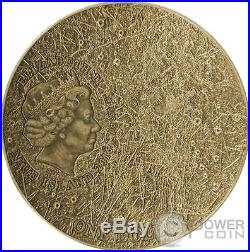

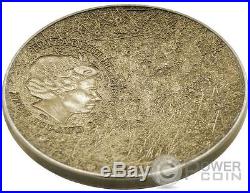

31.1 (1 oz). This beautiful 1 Oz Silver coin, with a real meteorite and yellow Antique Finsh quality, is the second issue of the series “Solar System”. The coin depicts the Mercury surface on both sides, with a concave shape and the insert is a real piece of the NWA 8409 Meteorite. The coin is housed in a prestigious wooden box with Certificate of Authenticity. Extremely low mintage of 686 pieces worldwide! The reverse of the coin depicts the Mercury surface, with very realistic details. What makes this coin unique is a real meteorite called NWA 8409, fallen on Earth in Northwest Africa, inlaid on the coin. On top of the coin the inscription “Solar System Mercury” and on the obverse side the effigy of Her Majesty Queen Elizabeth II. Mercury Mercury is the smallest planet in the Solar System and the one closest to the Sun, with an orbital period of about 88 Earth days, which is much faster than any other planet in the Solar System. Seen from Earth, it appears to move around its orbit in about 116 days. It has no known natural satellites. It is named after the Roman deity Mercury, the messenger to the gods. Partly because it has almost no atmosphere to retain heat, Mercury’s surface temperature varies diurnally more than any other planet in the Solar System, ranging from 100 K (-173 °C; -280 °F) at night to 700 K (427 °C; 800 °F) during the day in some equatorial regions. The poles are constantly below 180 K (-93 °C; -136 °F). Mercury’s axis has the smallest tilt of any of the Solar System’s planets (about 1/30 of a degree). However it has the largest orbital eccentricity: at aphelion, Mercury is about 1.5 times as far from the Sun as it is at perihelion. Mercury’s surface is heavily cratered and similar in appearance to the Moon, indicating that it has been geologically inactive for billions of years. Mercury is gravitationally locked and rotates in a way that is unique in the Solar System. As seen relative to the fixed stars, it rotates on its axis exactly three times for every two revolutions it makes around the Sun. As seen from the Sun, in a frame of reference that rotates with the orbital motion, it appears to rotate only once every two Mercurian years. An observer on Mercury would therefore see only one day every two years. The item “SOLAR SYSTEM MERCURY NWA 8409 Meteorite Silver Coin 1$ Niue 2016″ is in sale since Thursday, September 08, 2016. This item is in the category “Coins & Paper Money\Coins\ World\Australia & Oceania\South Pacific”. The seller is “powercoin_italy” and is located in Roma, Lazio. This item can be shipped worldwide.
- Circulated/Uncirculated: Uncirculated
- Year: 2016
- Composition: Silver
- Country/Region of Manufacture: Niue
Comments Off
13th July
2016

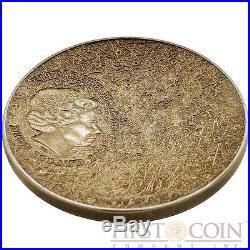


Extremely low mintage 686 coins in the world. 2nd coin in unique Niue Island 1oz SOLAR SYSTEM series. Each coin has a piece of Meteorite NWA 8409 in value of 50 Euro! Real Mercury meteorite on the convex shape coin. Pure 99.9% silver 1 ounce. Very low mintage of just 686 coins in the world. A wooden box with color package. Legal tender of Niue Island (New Zealand Dollar). Mercury is the smallest planet in the Solar System and the one closest to the Sun, with an orbital period of about 88 Earth days, which is much faster than any other planet in the Solar System. Seen from Earth, it appears to move around its orbit in about 116 days. It has no known natural satellites. It is named after the Roman deity Mercury, the messenger to the gods. Partly because it has almost no atmosphere to retain heat, Mercury’s surface temperature varies diurnally more than any other planet in the Solar System, ranging from 100 K (173 °C; 280 °F) at night to 700 K (427 °C; 800 °F) during the day in some equatorial regions. The poles are constantly below 180 K (93 °C; 136 °F). Mercury’s axis has the smallest tilt of any of the Solar System’s planets (about 130 of a degree). However, Mercury’s orbital eccentricity is the largest of all known planets in the Solar System. At aphelion, Mercury is about 1.5 times as far from the Sun as it is at perihelion. Mercury’s surface is heavily cratered and similar in appearance to the Moon, indicating that it has been geologically inactive for billions of years. Extremely high international collectible demand. Highly appreciated in investing in Collectible Coins. 2nd coin in series. Special antique finish (yellow as Mercury planet). Real mercury meteorite, Ultra high relief craters; Convex shape. Wooden box and color package. The item “Niue Island MERCURY series SOLAR SYSTEM Silver coin $1 Antique finish 2016″ is in sale since Friday, July 08, 2016. This item is in the category “Coins & Paper Money\Coins\ World\Australia & Oceania\South Pacific”. The seller is “firstcoincompany” and is located in Santa Clara, California. This item can be shipped worldwide.
- Composition: 99.9% Pure Silver
- Denomination: $1 (NZD)
- Metal: 99.9% Pure Silver
- Mintage: 686 coins in the world
- Fineness (% purity): 99.9%
- Content (Troy oz/ounce): 1 oz
- Weight: 31.10 grams
- Diameter: 38.61 mm
- Year of Issue: 2016
- Uncirculated: Uncirculated/Collectible legal tender silver coin
- Country: Niue Island
- Quality: Special antique finish (yellow as Mercury planet)
- Exterior Decoration: Mercury meteorite, Ultra high relief; Convex shape
- Package type includes: Wooden box and color package (see picture)
- Certificate of Authenticity: issued by the Mint of Poland
Comments Off
28th June
2016





31.1 (1 oz). This beautiful 1 Oz Silver coin, with a real meteorite and yellow Antique Finsh quality, is the second issue of the series “Solar System”. The coin depicts the Mercury surface on both sides, with a concave shape and the insert is a real piece of the NWA 8409 Meteorite. The coin is housed in a prestigious wooden box with Certificate of Authenticity. Extremely low mintage of 686 pieces worldwide! The reverse of the coin depicts the Mercury surface, with very realistic details. What makes this coin unique is a real meteorite called NWA 8409, fallen on Earth in Northwest Africa, inlaid on the coin. On top of the coin the inscription “Solar System Mercury” and on the obverse side the effigy of Her Majesty Queen Elizabeth II. Mercury Mercury is the smallest planet in the Solar System and the one closest to the Sun, with an orbital period of about 88 Earth days, which is much faster than any other planet in the Solar System. Seen from Earth, it appears to move around its orbit in about 116 days. It has no known natural satellites. It is named after the Roman deity Mercury, the messenger to the gods. Partly because it has almost no atmosphere to retain heat, Mercury’s surface temperature varies diurnally more than any other planet in the Solar System, ranging from 100 K (-173 °C; -280 °F) at night to 700 K (427 °C; 800 °F) during the day in some equatorial regions. The poles are constantly below 180 K (-93 °C; -136 °F). Mercury’s axis has the smallest tilt of any of the Solar System’s planets (about 1/30 of a degree). However it has the largest orbital eccentricity: at aphelion, Mercury is about 1.5 times as far from the Sun as it is at perihelion. Mercury’s surface is heavily cratered and similar in appearance to the Moon, indicating that it has been geologically inactive for billions of years. Mercury is gravitationally locked and rotates in a way that is unique in the Solar System. As seen relative to the fixed stars, it rotates on its axis exactly three times for every two revolutions it makes around the Sun. As seen from the Sun, in a frame of reference that rotates with the orbital motion, it appears to rotate only once every two Mercurian years. An observer on Mercury would therefore see only one day every two years. The item “SOLAR SYSTEM MERCURY NWA 8409 Meteorite Silver Coin 1$ Niue 2016″ is in sale since Thursday, June 23, 2016. This item is in the category “Coins & Paper Money\Coins\ World\Australia & Oceania\South Pacific”. The seller is “powercoin_italy” and is located in Roma. This item can be shipped worldwide.
- Circulated/Uncirculated: Uncirculated
- Year: 2016
- Composition: Silver
- Country/Region of Manufacture: Niue
Comments Off
8th June
2016





Coin comes in the capsule with COA and original Box. Please see our other auctions. Return item must be sent within 14 days after it has been received. The item “Niue 2016 1$ Mercury Solar System Antique finish Meteorite NWA 8409 Silvler Coin” is in sale since Wednesday, June 01, 2016. This item is in the category “Coins & Paper Money\Coins\ World\Australia & Oceania\Other Oceania Coins”. The seller is “coins-cis” and is located in Poland. This item can be shipped worldwide.
- Composition: Silver
Comments Off
28th May
2016
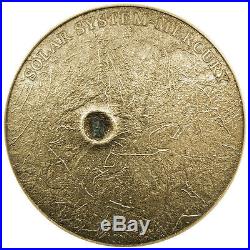



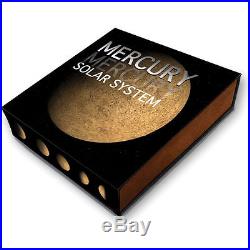

Coin in mint condition, With a piece of the NWA 8409 Mercury Meteorite, ONLY 686 PCS. This beautiful 1 Oz Silver coin, with a real meteorite and yellow Antique Finsh quality, is the second issue of the series “Solar System”. The coin depicts the Mercury surface on both sides, with a concave shape and the insert is a real piece of the NWA 8409 Meteorite. The coin is housed in a prestigious wooden box with Certificate of Authenticity. Extremely low mintage of 686 pieces worldwide! The reverse of the coin depicts the Mercury surface, with very realistic details. What makes this coin unique is a real meteorite called NWA 8409, fallen on Earth in Northwest Africa, inlaid on the coin. On top of the coin the inscription “Solar System Mercury” and on the obverse side the effigy of Her Majesty Queen Elizabeth II. Is possible to combine. COIN IN MINT CONDITION, CAPSULE, BOX AND CERTIFICATE. The item “Niue 2016 1$ SOLAR SYSTEM MERCURY NWA 8409 Meteorite Silver Coin only 686 pcs” is in sale since Monday, May 23, 2016. This item is in the category “Coins & Paper Money\Coins\ World\Australia & Oceania\South Pacific”. The seller is “amorphisgiga” and is located in Málaga. This item can be shipped worldwide.
- Circulated/Uncirculated: Uncirculated
- Year: 2016
- Grade: Antique Finish
- Composition: Silver 999/1000
Comments Off
18th May
2016





31.1 (1 oz). This beautiful 1 Oz Silver coin, with a real meteorite and yellow Antique Finsh quality, is the second issue of the series “Solar System”. The coin depicts the Mercury surface on both sides, with a concave shape and the insert is a real piece of the NWA 8409 Meteorite. The coin is housed in a prestigious wooden box with Certificate of Authenticity. Extremely low mintage of 686 pieces worldwide! The reverse of the coin depicts the Mercury surface, with very realistic details. What makes this coin unique is a real meteorite called NWA 8409, fallen on Earth in Northwest Africa, inlaid on the coin. On top of the coin the inscription “Solar System Mercury” and on the obverse side the effigy of Her Majesty Queen Elizabeth II. Mercury Mercury is the smallest planet in the Solar System and the one closest to the Sun, with an orbital period of about 88 Earth days, which is much faster than any other planet in the Solar System. Seen from Earth, it appears to move around its orbit in about 116 days. It has no known natural satellites. It is named after the Roman deity Mercury, the messenger to the gods. Partly because it has almost no atmosphere to retain heat, Mercury’s surface temperature varies diurnally more than any other planet in the Solar System, ranging from 100 K (-173 °C; -280 °F) at night to 700 K (427 °C; 800 °F) during the day in some equatorial regions. The poles are constantly below 180 K (-93 °C; -136 °F). Mercury’s axis has the smallest tilt of any of the Solar System’s planets (about 1/30 of a degree). However it has the largest orbital eccentricity: at aphelion, Mercury is about 1.5 times as far from the Sun as it is at perihelion. Mercury’s surface is heavily cratered and similar in appearance to the Moon, indicating that it has been geologically inactive for billions of years. Mercury is gravitationally locked and rotates in a way that is unique in the Solar System. As seen relative to the fixed stars, it rotates on its axis exactly three times for every two revolutions it makes around the Sun. As seen from the Sun, in a frame of reference that rotates with the orbital motion, it appears to rotate only once every two Mercurian years. An observer on Mercury would therefore see only one day every two years. The item “SOLAR SYSTEM MERCURY NWA 8409 Meteorite Silver Coin 1$ Niue 2016″ is in sale since Saturday, May 14, 2016. This item is in the category “Coins & Paper Money\Coins\ World\Australia & Oceania\South Pacific”. The seller is “powercoin_italy” and is located in Roma. This item can be shipped worldwide.
- Circulated/Uncirculated: Uncirculated
- Year: 2016
- Composition: Silver
- Country/Region of Manufacture: Niue
Comments Off


